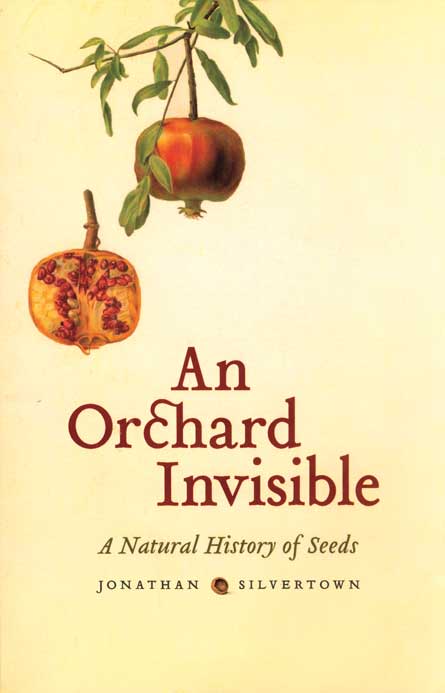Book Review: An Orchard Invisible: A Natural History of Seeds by Jonathan Silvertown
Review by Susan Milius
A single coco-de-mer, the largest known seed, can weigh 23 kilograms, as much as an airline passenger’s checked luggage, writes Jonathan Silvertown, an ecologist at the Open University in Milton Keynes, England.
What drove the coco-de-mer palm to such extreme nuttiness is just one of the evolutionary puzzles Silvertown discusses in An Orchard Invisible. The book tours the marvels of plant seeds, standing out among others on the subject by emphasizing how the weird and the wonderful have evolved.
Since the coco-de-mer can’t float, extra provisions for sustaining the plant embryo during dispersal by sea didn’t drive the gigantism. Instead, an ancient climate shift ignited a fight for height, Silvertown explains. Most other tree trunks grow out as they grow up, ensuring stability. But palms can’t thicken their trunks throughout life. To soar as a structurally sound adult, a palm has to thicken as a youth, and bigger well-provisioned seeds offered a fast start in the race for fat trunks.
Silvertown covers not only seeds but also the quirky plant sex that makes them. Anyone inclined to dismiss wind pollination as the boring alternative to bees and flowers needs to read his account of ginkgo tree procreation. It starts with female parts dangling a liquid droplet from a pore and then drawing the drop back, along with pollen snagged from the breeze. The male structures eventually produce sperm with thousands of whipping hairs to power them forward.
Plants can make seeds without sex, so Silvertown reviews the pros and cons of sexuality. Asexuality has its success stories: Japanese knotweed plants in Britain, continental Europe and the United States are all clones of a single plant. But overall, Silvertown concludes, sex is winning.
Univ. of Chicago, 2009, 224 p., $25
